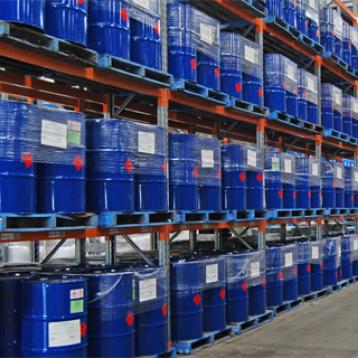A country that has a diversified economy integrated into the global processes of division of labor cannot develop without the use of chemically active and hazardous substances and gases. Diversified agriculture, manufacturing of building materials and components for mechanical engineering, chemical industry and other sectors of the Ukrainian economy every year consuming more materials that are in transport and storage (warehousing) are defined as dangerous goods.
In the production of dangerous substances the manufacturer issues a safety data sheet, which specifies the hazard class of the cargo. In our country classification of dangerous goods occurs on the basis of DSTU 4500-3:2008 "dangerous Goods" (hereinafter – the Standard).
Dangerous goods are those substances (mixtures of substances, solutions), materials, products, waste production other activities that meet the classification characteristics, criteria or characteristics defined in the Standard, and due to their inherent properties and in the presence of certain factors can cause damage to the environment, property damage, cause of death, injury, poisoning, diseases of humans and animals.
The provisions of the Standard shall apply to business entities irrespective of patterns of ownership and types of their activities, which are parties to any of logistics operations involving dangerous goods. Separately, it should be noted that the Standard does not apply to dangerous goods which transporterowych bulk of marine and river vessels, pipeline transport or on the territory of enterprises, institutions and organizations, where these cargos are produced ready to be sent, use or subjected to burial. Warehouses for storage of dangerous goods, that is parts of the supply chain associated with the road quite often klassificeret using abbreviations ADR, which means Accord Dangereuses Route – the Treaty of the European States about international transportation of dangerous goods. The abbreviated title of the Treaty on the Ukrainian language of DOPNV, in Russian - DOPOG.
The goods depending on the nature of the hazard and its properties (chemical, physical, biological) are divided into classes ADR. In some cases, dangerous goods may be characterized by several kinds of risk, in such cases use the terms "Main danger" and "Additional danger". The standard defines nine classes of dangerous goods.
For the classification of warehouse property of this profile, as well as to identify the structural features of warehouses, it is advisable to use the correspondence principle to the hazard class of substances which are to be storage in the warehouse.
We use the following classification of the warehouse facilities:
ADR 1 — for storage of explosives substances and articles.
ADR 2 for the storage of gases.
ADR 3 — storage of flammable liquids.
ADR 4 — flammable solids; substances liable to spontaneous combustion substances that emit flammable gases in contact with water.
ADR 5 — storage of oxidizing substances and organic peroxides.
ADR 6 — storage of toxic substances and infectious substances.
ADR 7 — storage of radioactive materials.
ADR 8 — storage of corrosive (caustic) substances.
ADR 9 — storage of dangerous substances and articles.
Other features of warehouses for storage of dangerous goods in the following publications.

